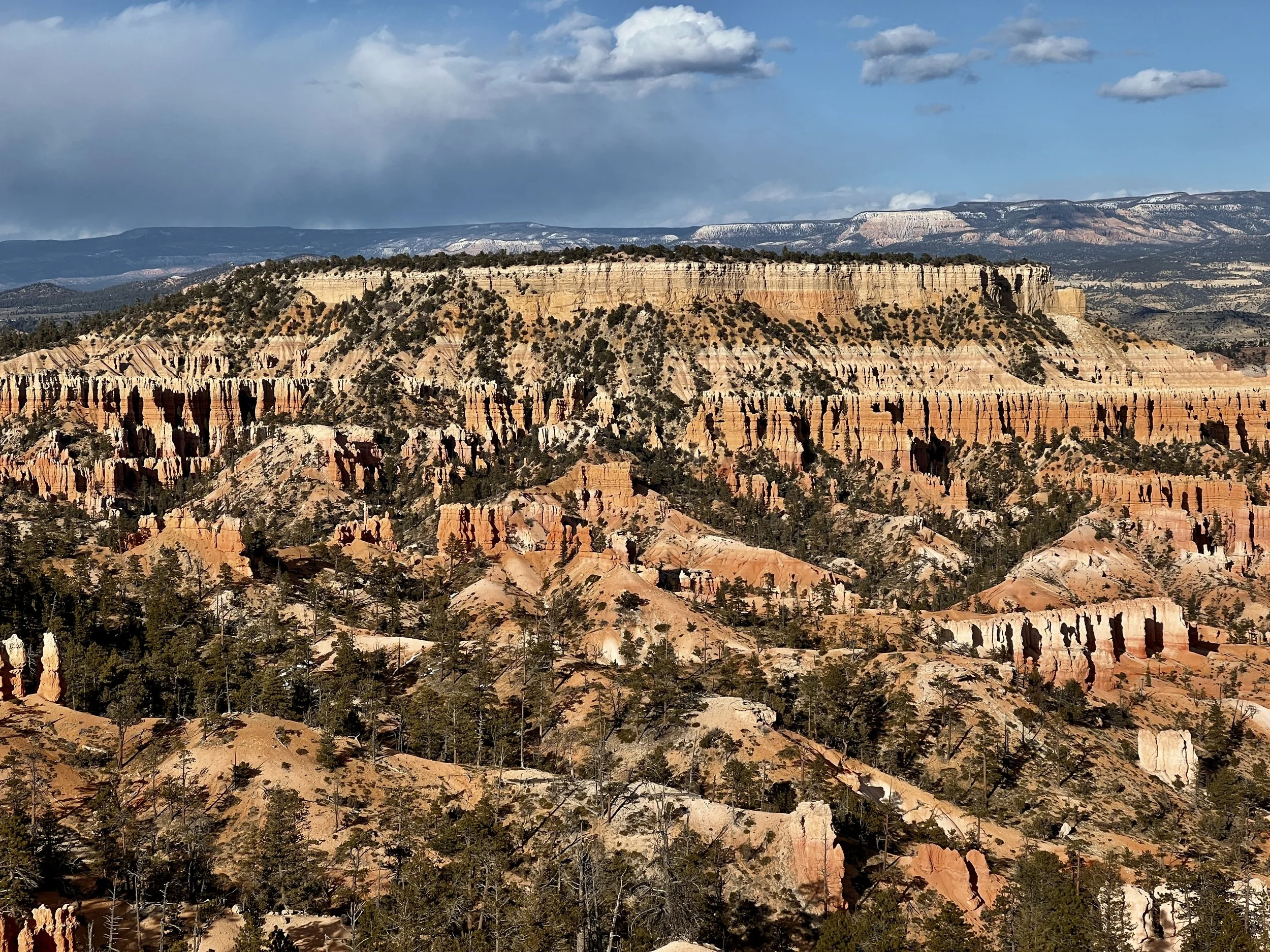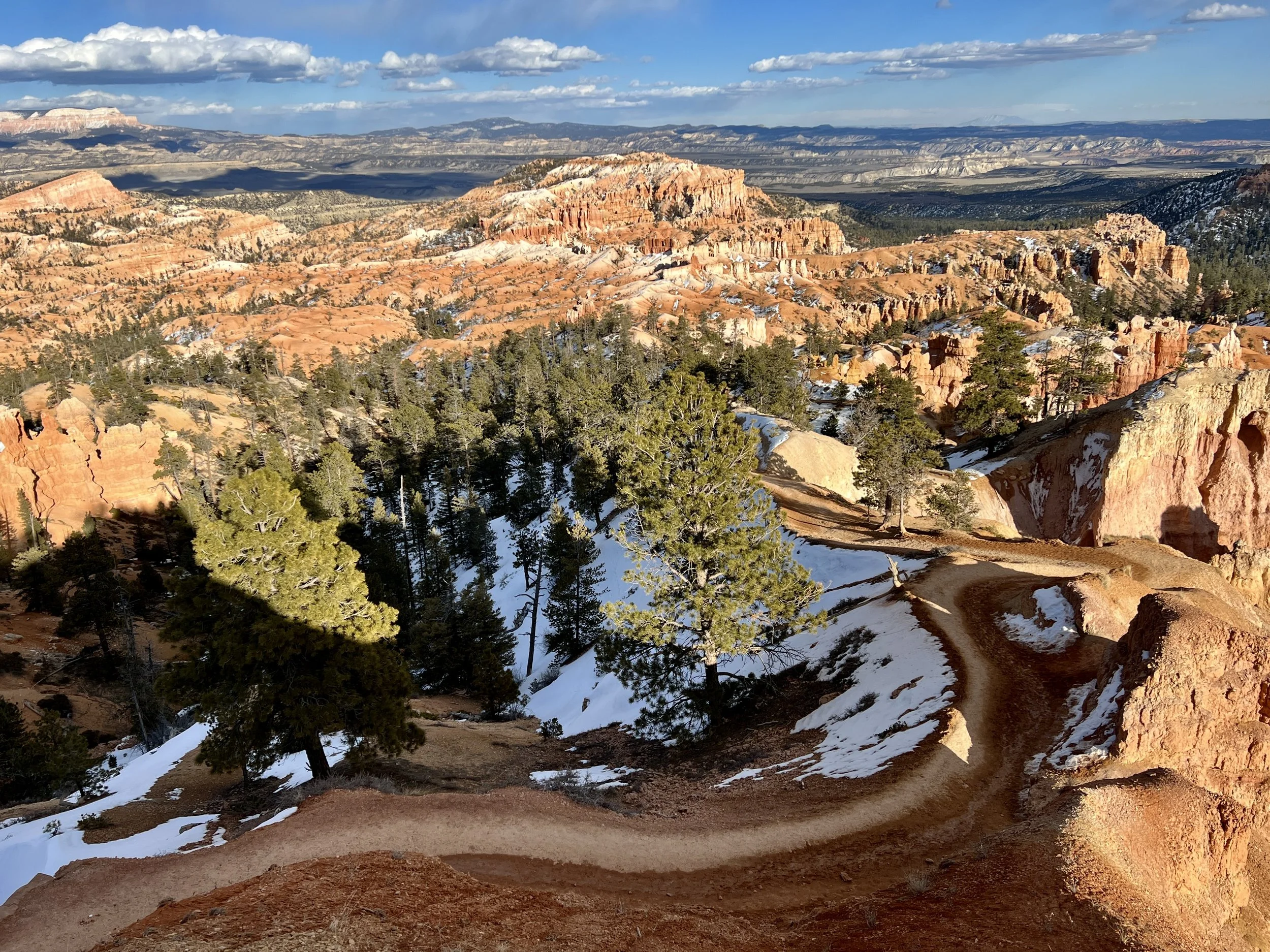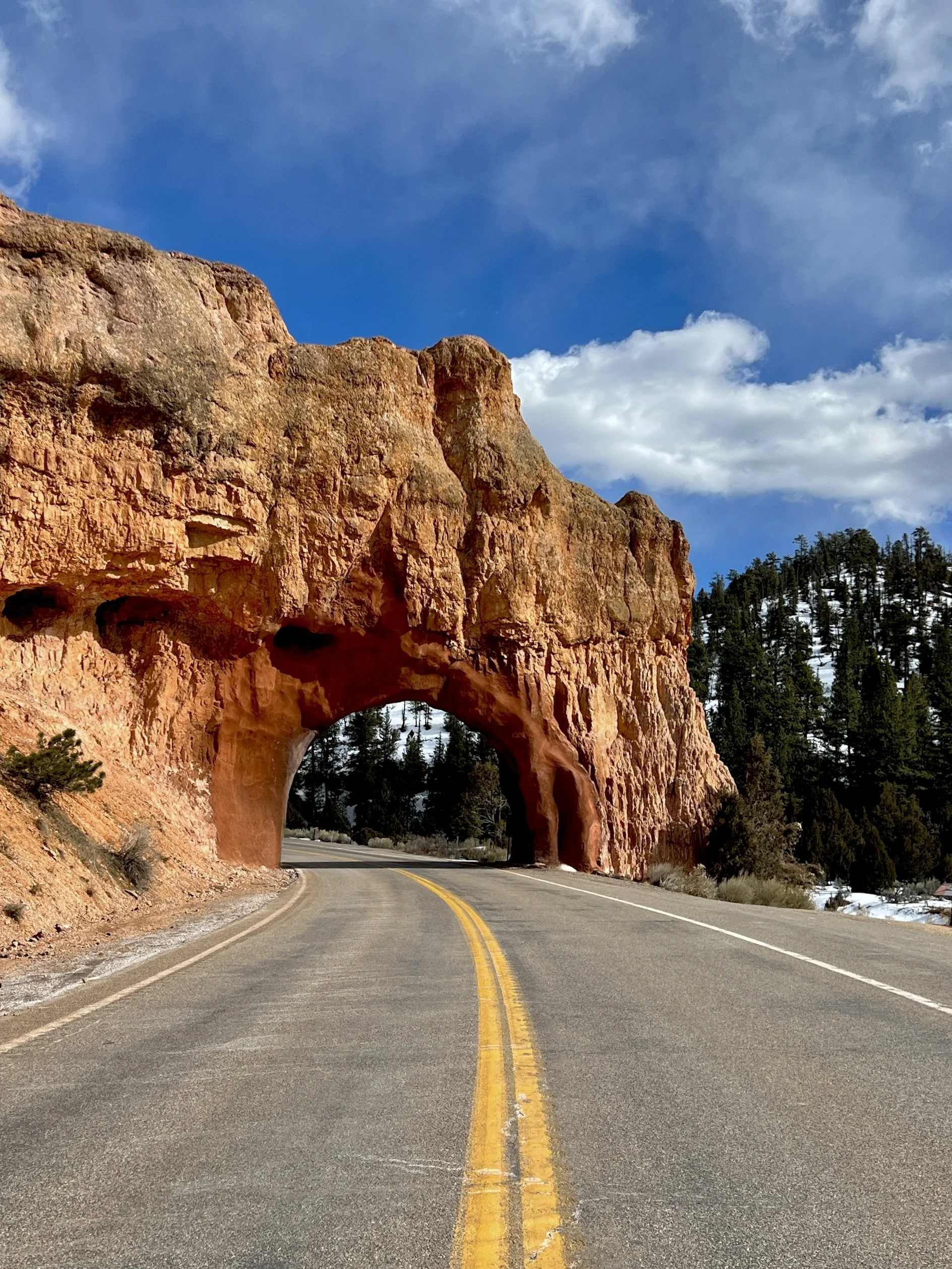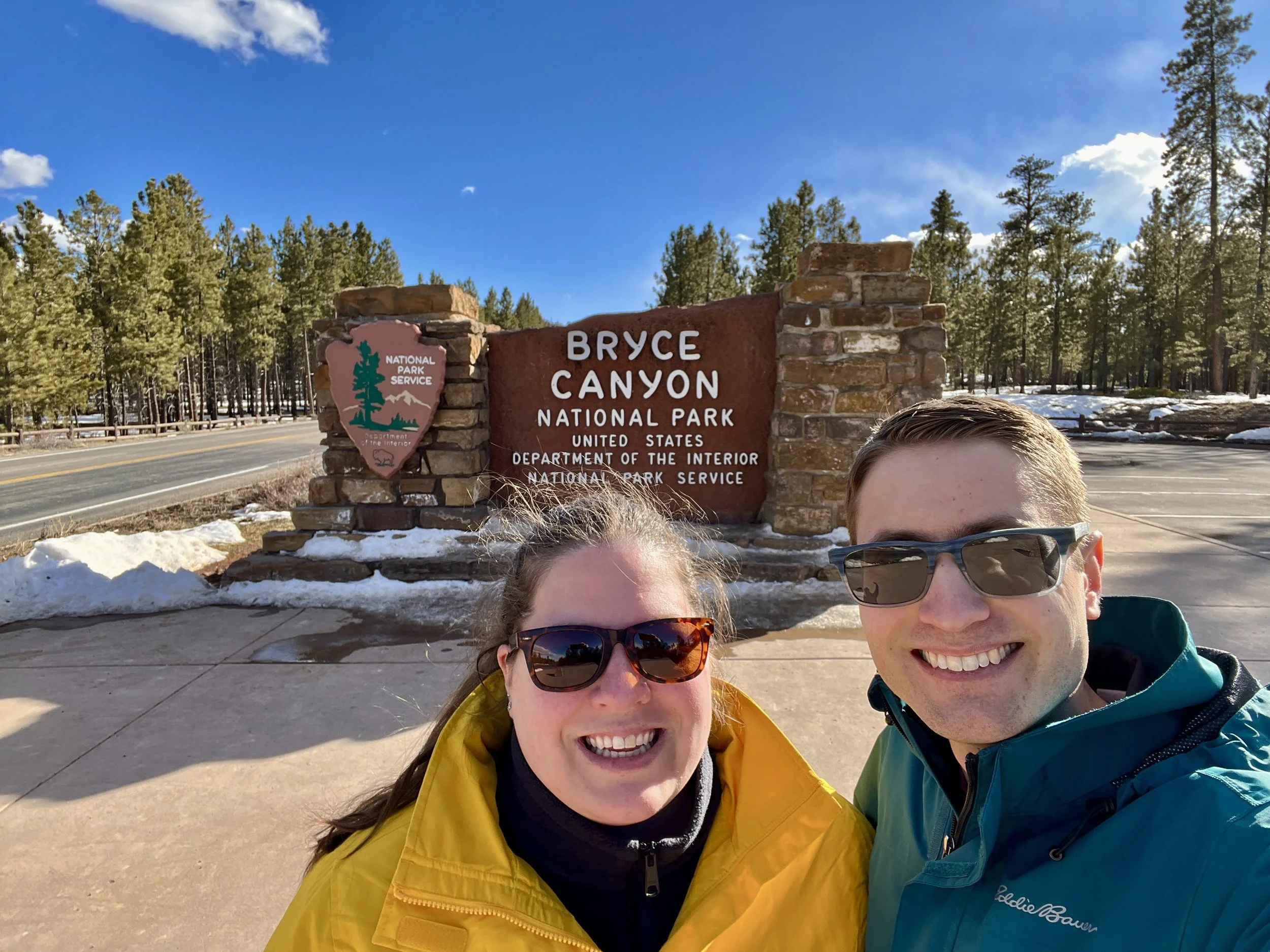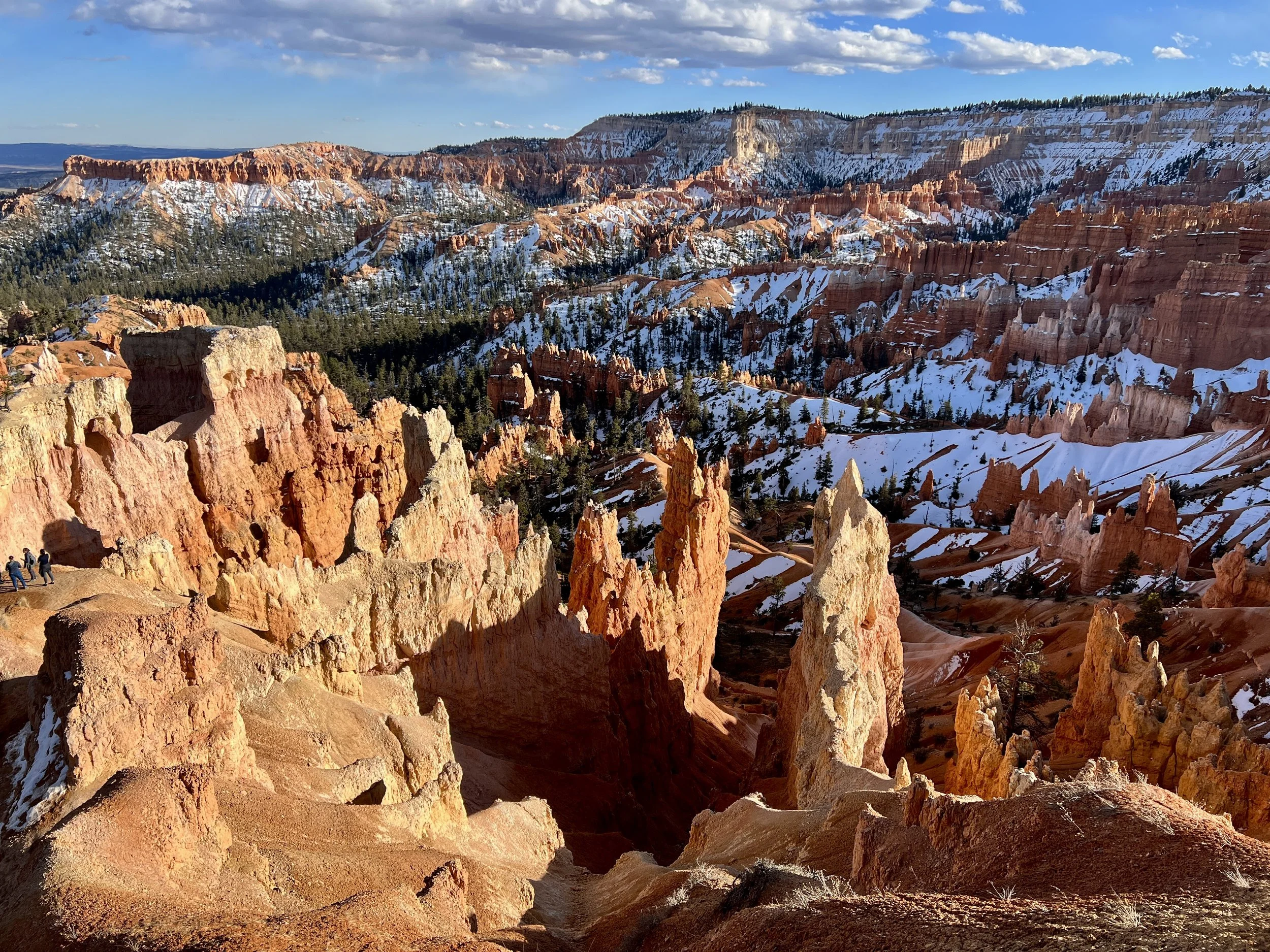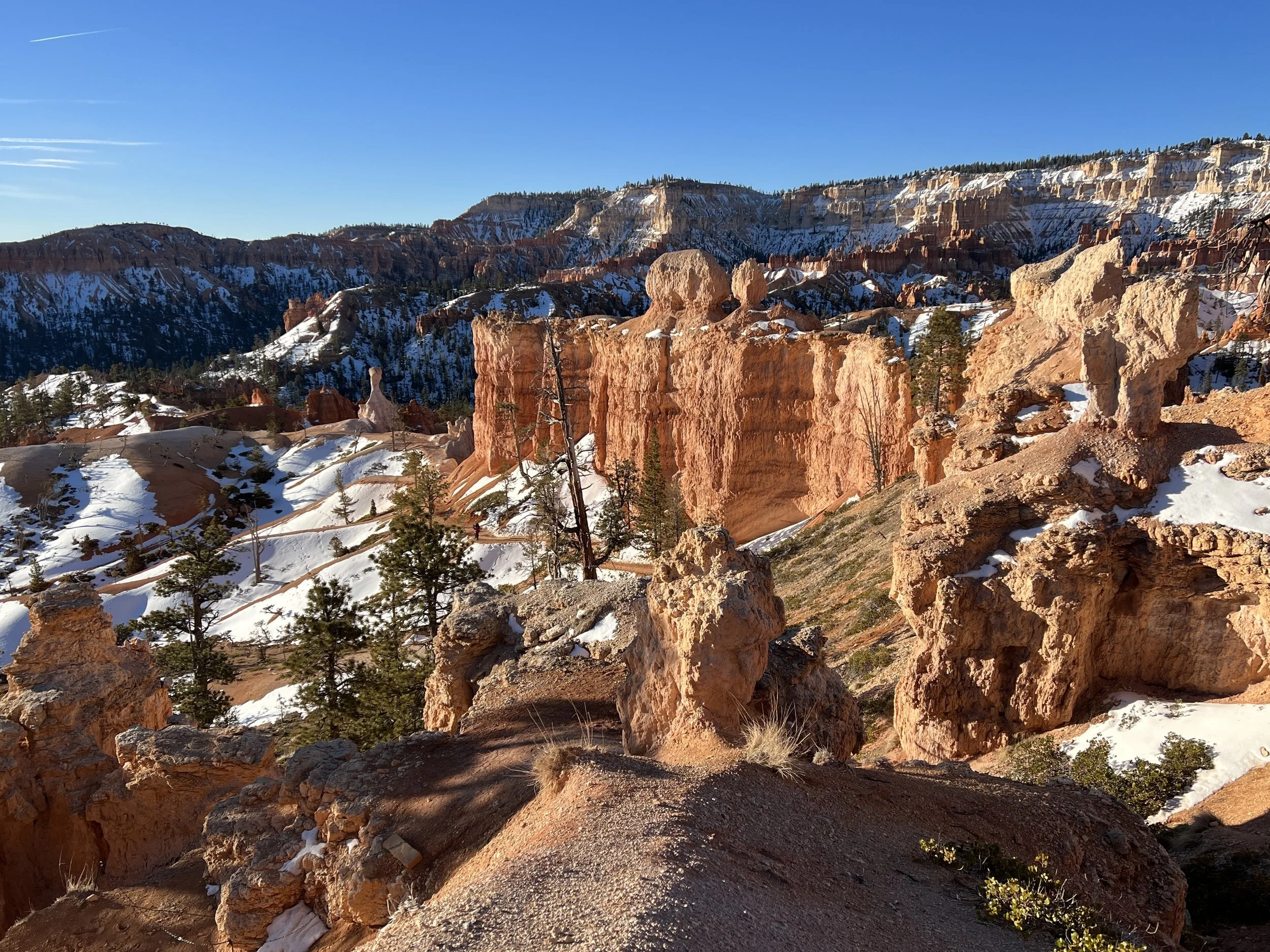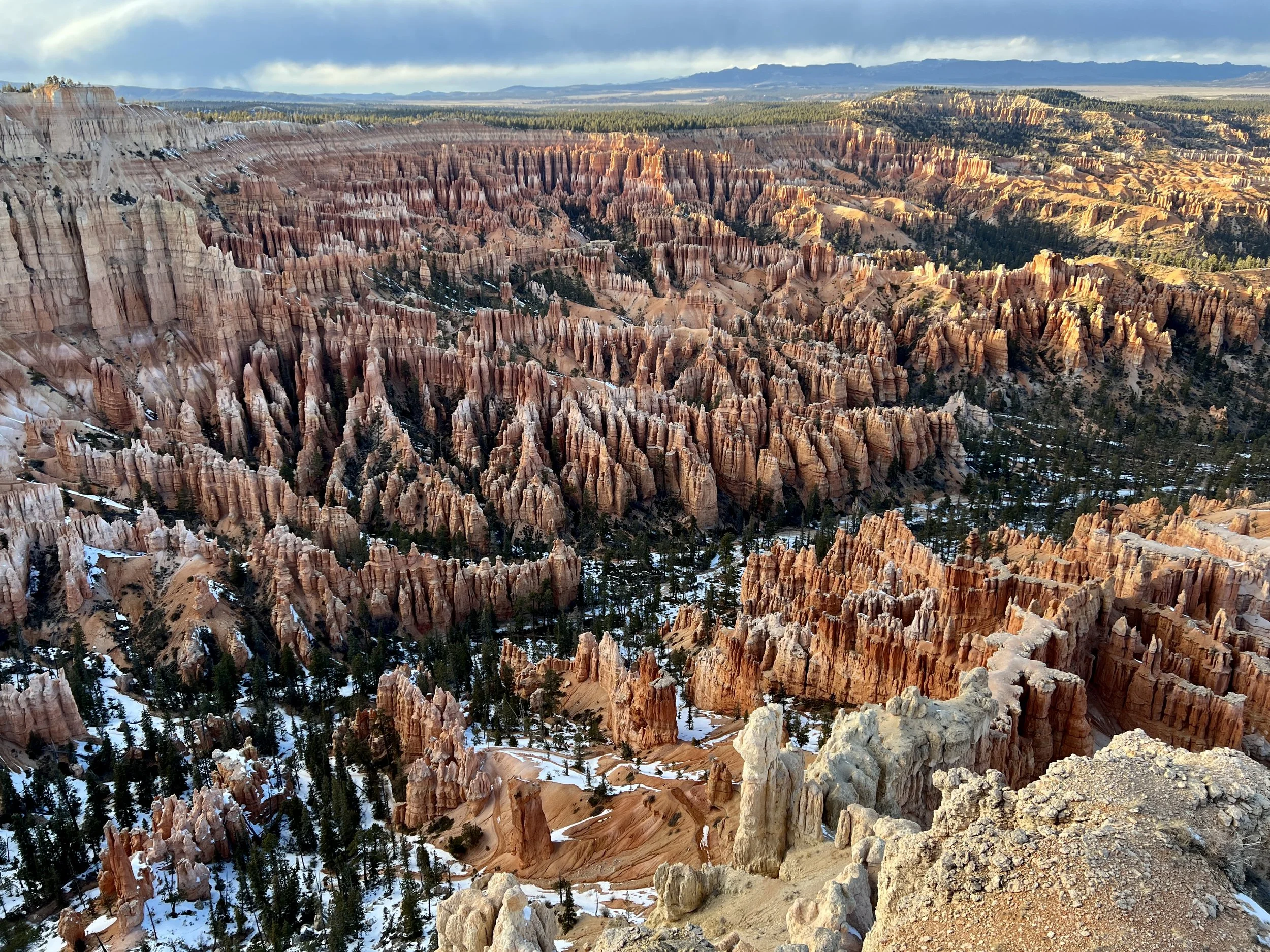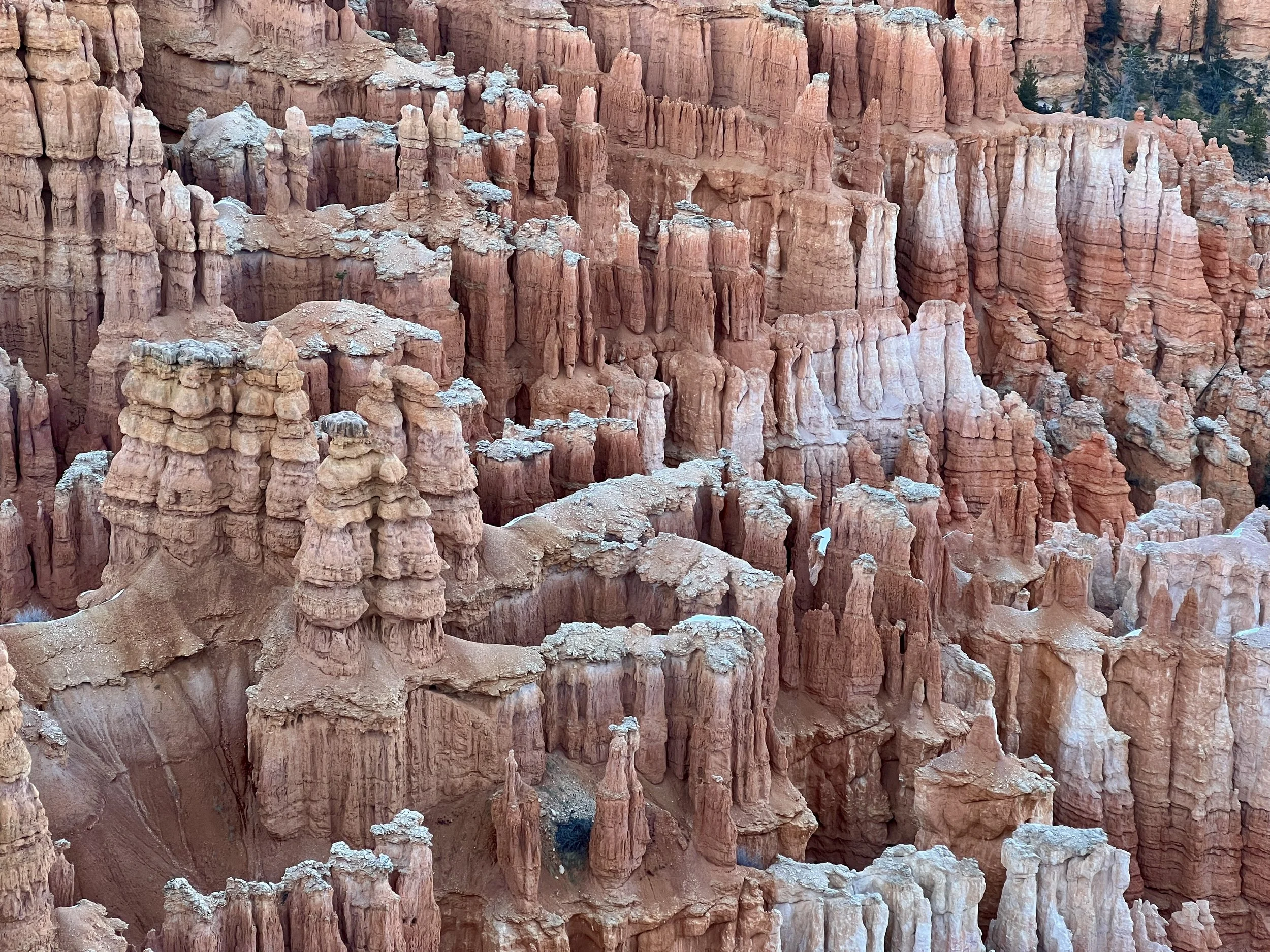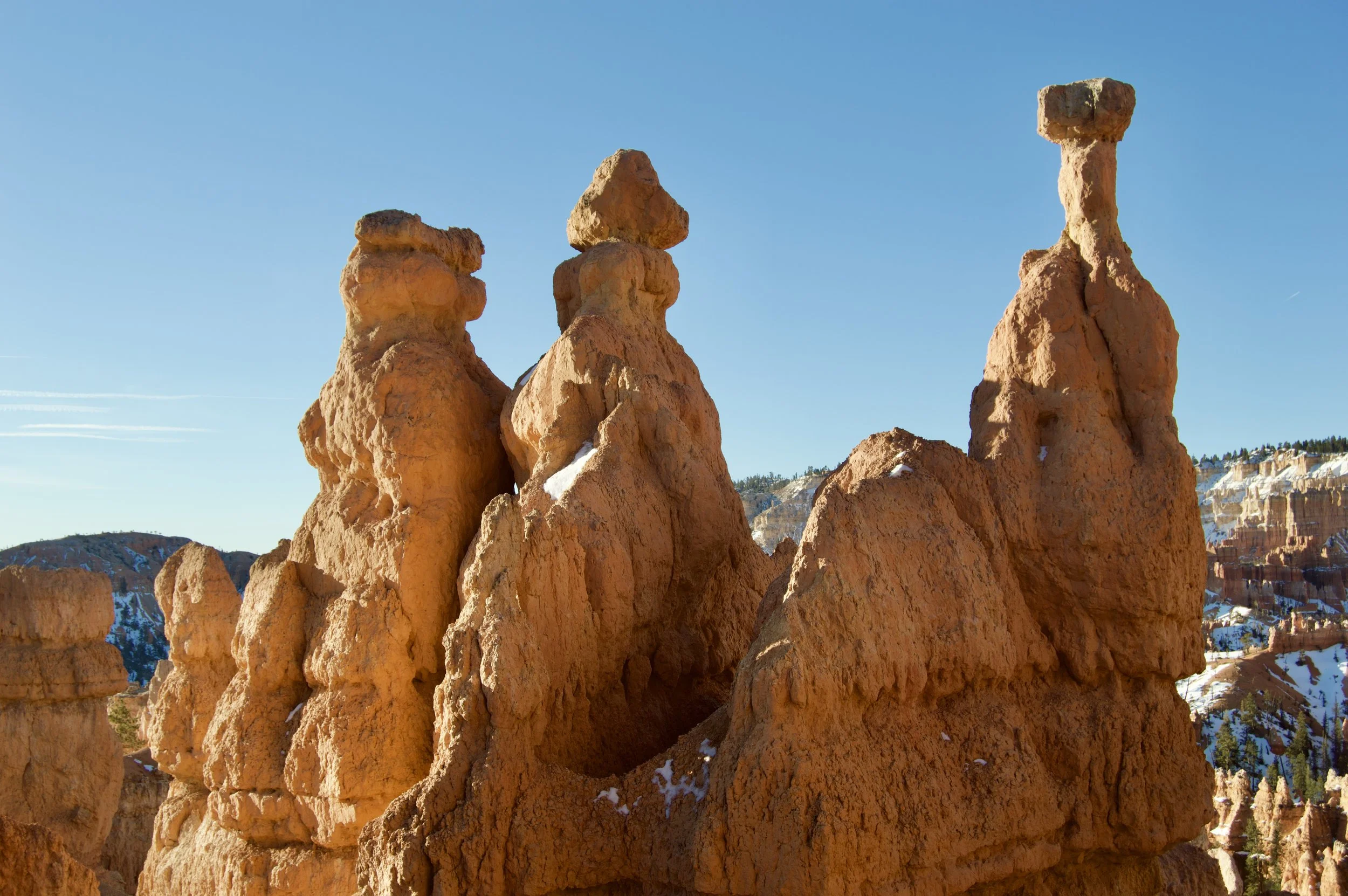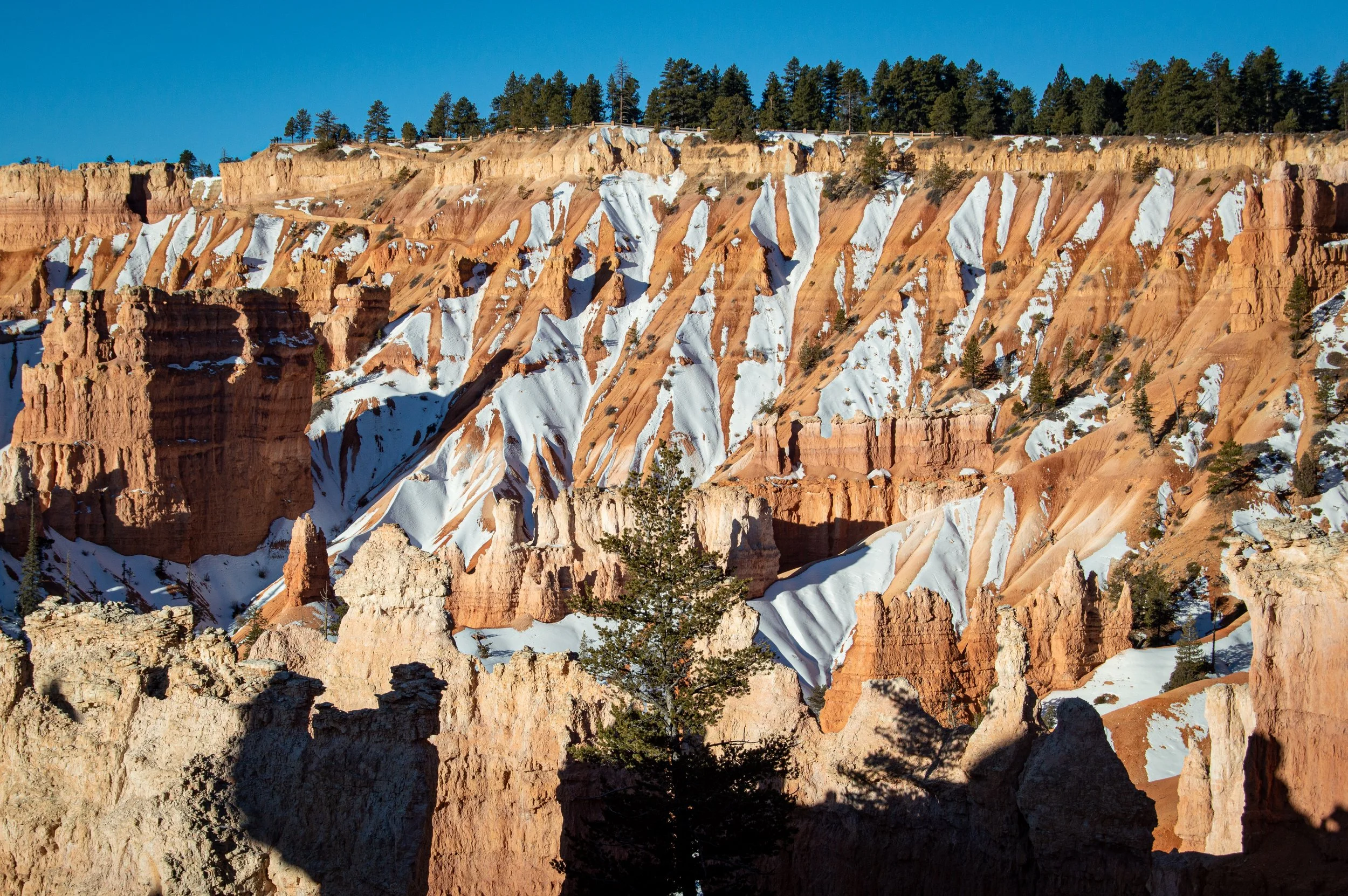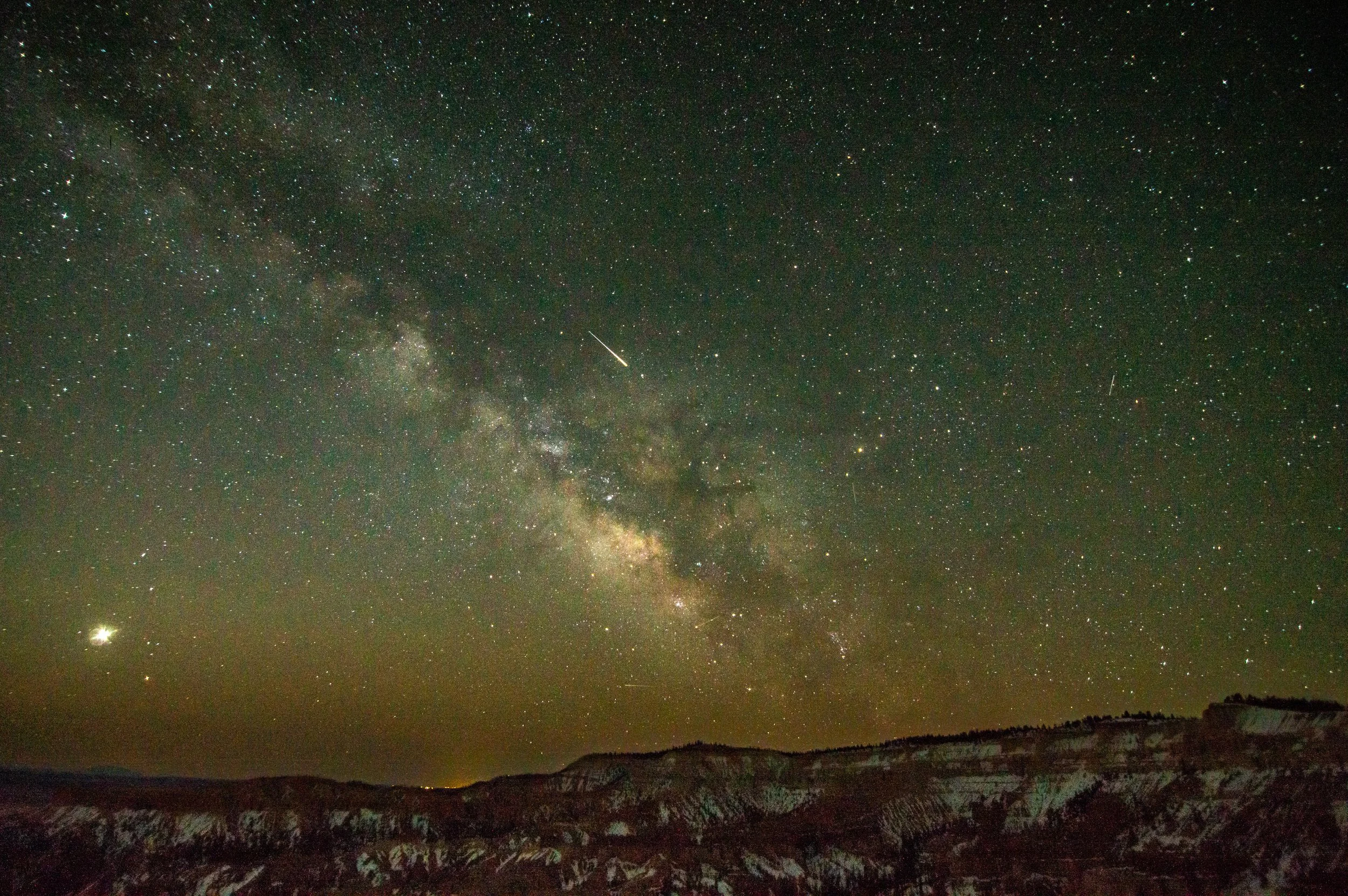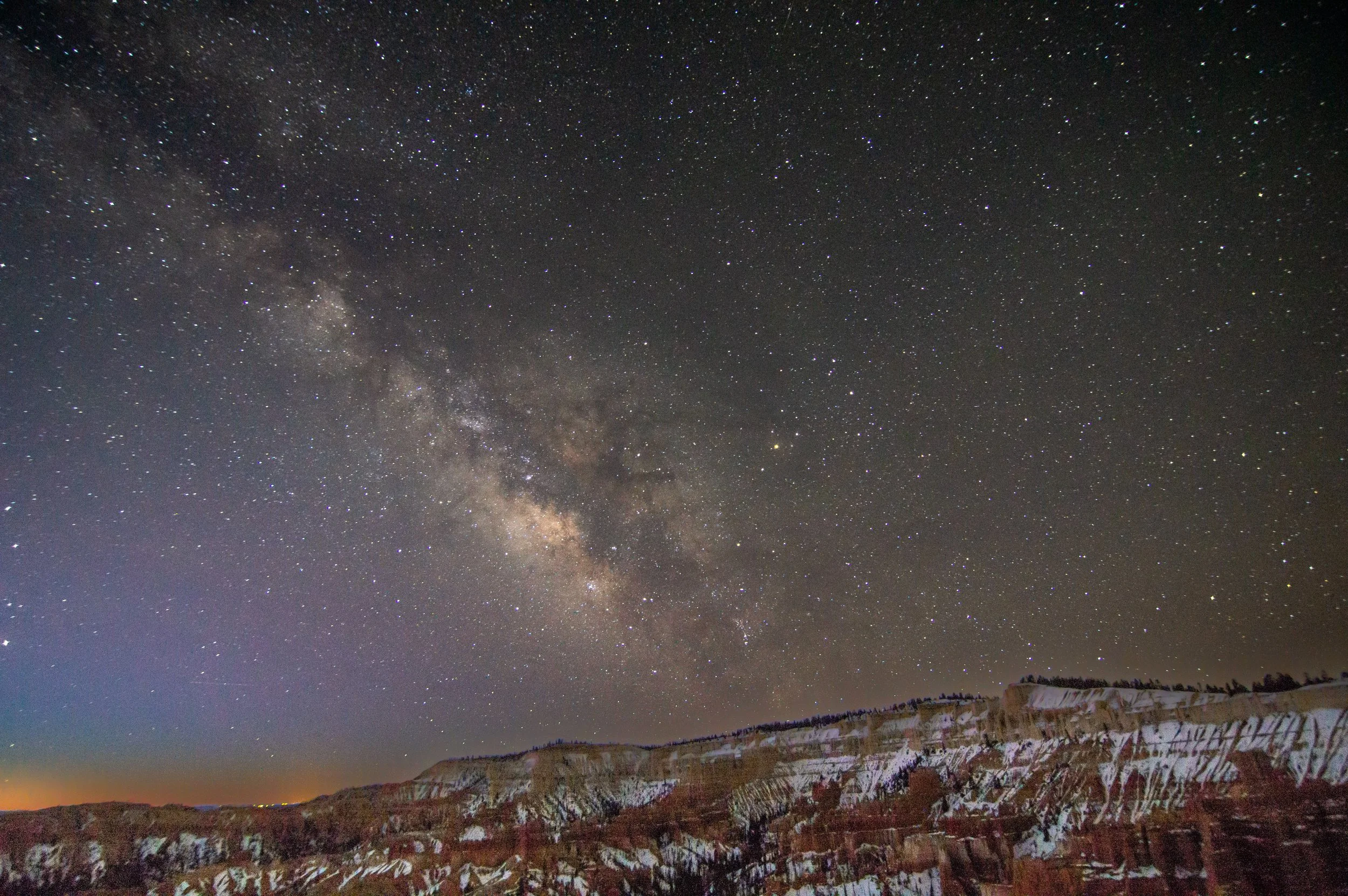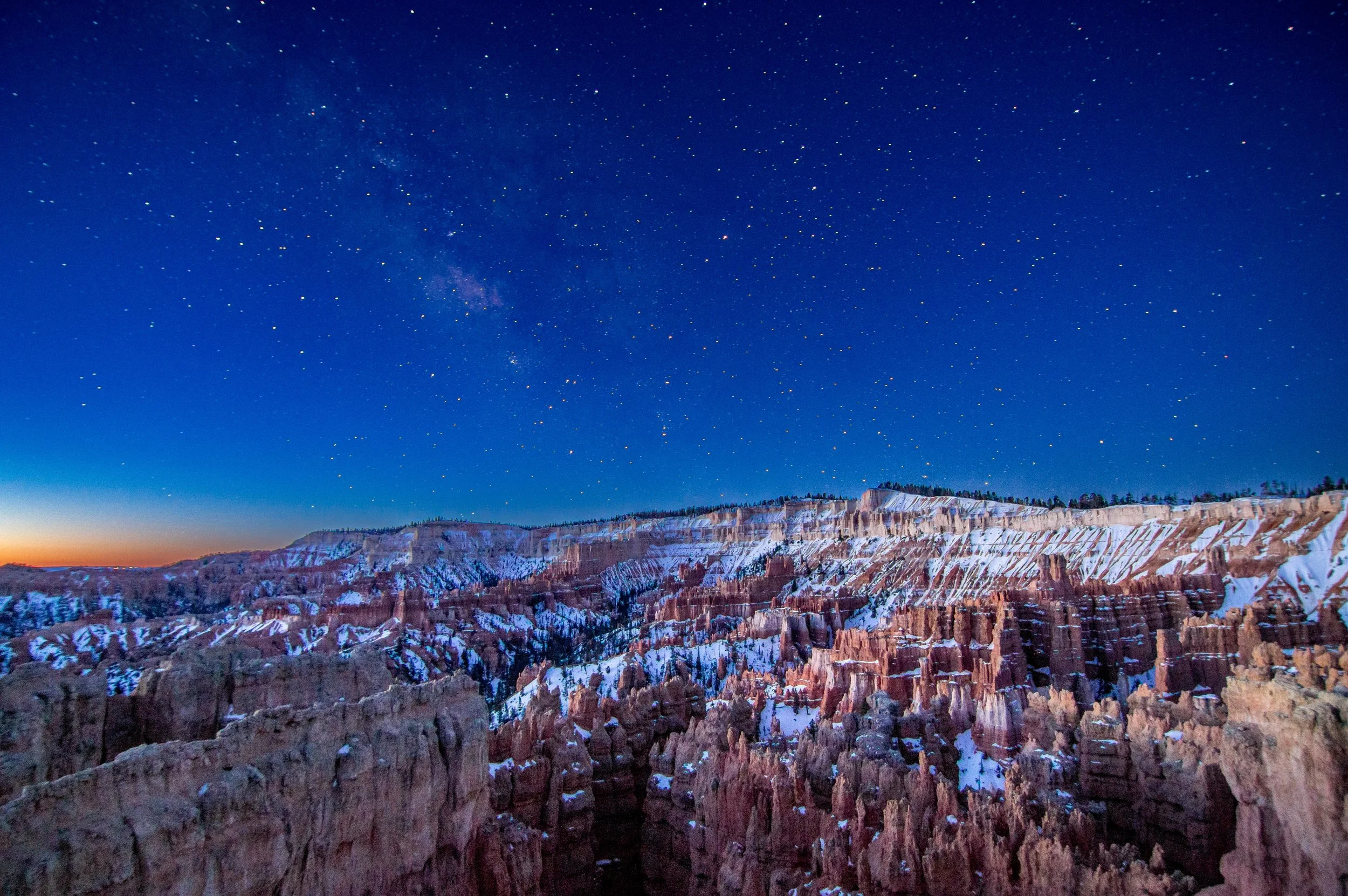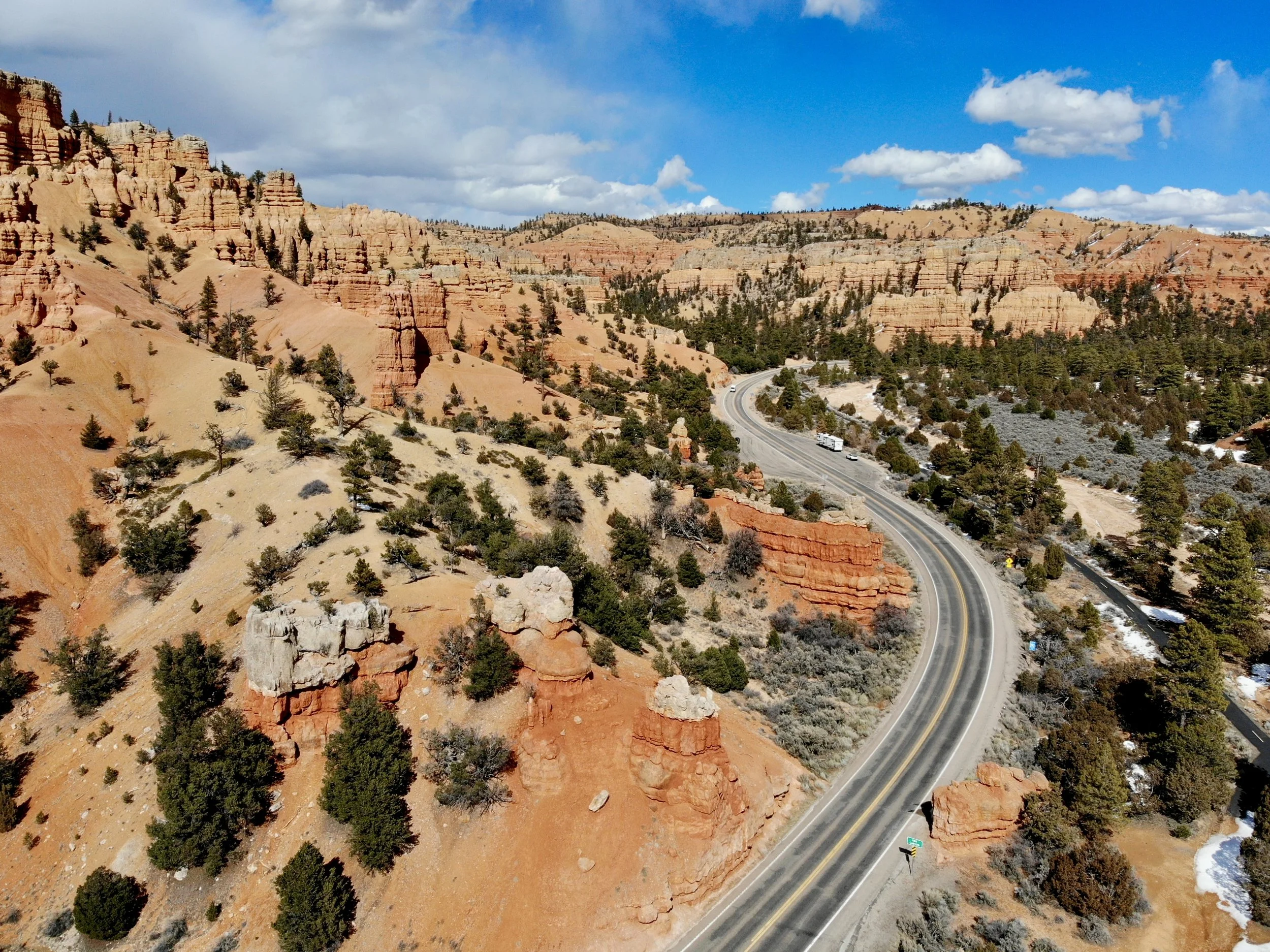Bryce Canyon Bucket List
When researching our trip to Utah, I only knew about Zion and Arches, so I was surprised to discover that there were 3 additional national parks: Bryce Canyon, Capitol Reef, and Canyonlands! Of those three additional parks, I was most excited to explore Bryce Canyon, it seemed the most unique and unlike anything I’d ever seen before. While planning for our trip, we ended up with quite the bucket list of things to see and do at Bryce Canyon, so here’s what topped our list.
View of Bryce Canyon National Park near Sunrise Point
Hoodoos
Bryce Canyon is known for it’s incredibly unique rock formations called hoodoos. The hoodoos are created mainly by water erosion and the freeze-thaw cycle that happens when you have warm temps during the day and freezing temps overnight. The water seeps into the cracks between the rocks and freezes overnight, expanding within the cracks. In the morning it melts and takes the broken pieces away.
View of Bryce Canyon from Sunrise Point in the late afternoon
The canyon is made mainly of soft sandstone, which is very susceptible to erosion, and there’s a top layer of limestone, which is harder, and acts as a cap on the top of many hoodoos.
There are a lot of great viewpoints in Bryce Canyon National Park. We started with Sunrise Point, which has a fantastic viewing area - although it can get muddy when wet, or icy in winter. If you are willing to wake up early, this is a wonderful place to watch the sunrise, as the name would suggest!
We moved on to Rainbow Point at the end of the road and the views were filled with tightly packed hoodoos.
View of Bryce Canyon from Rainbow Point
The most popular hoodoo in Bryce Canyon is Thor’s Hammer. It also happens to be the image used for Utah’s Geological Survey logo. You can reach Thor’s Hammer from Sunset Point. Sadly, this is one hoodoo we missed on our trip, so we will have to go back!
View of the hoodoos visible from Rainbow Point at Bryce Canyon
There are many other viewpoints, but we were short on time, having arrived in the late afternoon. It was mid-March when we visited, so the sunset was around 7:30pm, limiting our options for hiking. If you’re traveling when there’s more daylight hours, arriving in the afternoon shouldn’t prevent you from doing a hike.
Sunset Point is another very popular viewpoint for Bryce Canyon. The name is somewhat misleading though because the sun actually sets behind you when you’re looking at the canyon. Almost all of the viewpoints in Bryce Canyon face east, so you’ll probably have wonderful views of sunrise from anywhere in the park, but no matter where you are, the sun will typically be setting behind you. The canyon will be lit up with beautiful golden light, but don’t expect to be able to watch the sun dip below the horizon.
Hiking
Luckily, we had the following morning to do a hike in Bryce Canyon, which is the best way to get up close and personal with the hoodoos! A very popular hike is combining the Queen’s Garden Trail with the Navajo Loop Trail, resulting in a 3-mile loop. We were hoping to do this, but upon arriving at the park, we found out that the Navajo Switchbacks and Wall Street (two of the main attractions of hiking the Navajo Loop Trail) were closed due to mud, ice, and wanting to prevent erosion of the trail. We still could have done the combined hike, taking the second half of the Navajo Loop Trail, but we chose to do a small portion of the Queen’s Garden Trail instead.
Karin hiking in Bryce Canyon along the Queen’s Garden Trail
A close up view of some hoodoos at Bryce Canyon National Park
Hiking Gear:
When hiking, be sure to dress appropriately and have the right gear for the weather conditions. Mid-March in Bryce Canyon is still very much winter, and unlike at Arches or Zion, there’s still snow and ice on the ground.
Clothing - Wear lots of layers to keep you warm
Hiking boots - be sure to have the proper footwear: sturdy hiking boots with solid traction. Sneakers might be ok in summer, but in winter, when there’s ice and mud, you’ll want something more durable.
Crampons - depending on the trail conditions, you may want to have crampons. We had them with us, but didn’t need them, better safe than sorry.
Hiking poles - you’re hiking into the canyon so there’s going to be elevation changes. A hiking pole might come in handy.
Lots of water and snacks
A camera - you’re going to want it for all the cool hoodoos you’ll pass
Bryce Canyon National Park covered in snow
International Dark Sky Park
Bryce Canyon Nation Park is an International Dark Sky Park, which means that at night it’s free from light pollution and is the perfect place to see stars. Knowing this, we made it one of our top priorities to stargaze while we were at Bryce Canyon. We were lucky enough to see a portion of the Milky Way. We also saw three planets: Venus, Mars, and Saturn, and even a comet!
Milky Way, shooting star, Venus and Mars above Bryce Canyon National Park
Stargazing at Bryce Canyon meant planning ahead and, in winter, it also meant preparing to be very cold.
Milky Way above Bryce Canyon in winter, just before nautical twighlight
Here are some tips to keep in mind if you want to see stars:
Figure out when the full moon is - if the moon is full, it’s going to give off a lot of light and limit the number of stars you can see. So, if stargazing is your goal, it’s best to go outside after the moon has set. Check the moonrise/moonset times to plan ahead
Let your eyes adjust - it takes the human eye about 30 minutes to fully adjust to darkness, so give yourself enough time outside to let your eyes adjust to the lack of light. Once you do, you’ll be able to see so many stars! If you must use light, try to use a red light, it doesn’t disrupt your night vision as much as traditional white light
Dress appropriately - it’s night so it’s going to be colder than during the day, wear layers. If you’re stargazing in winter, bundle up! There could be a breeze, and because you’re not hiking, you’re just stargazing, you’re not moving around a lot so you’ll want more layers than if you were being active.
See the Milky Way Core - if your goal is to see the core of the Milky Way, use an app, or search online, to figure out when it will be visible. Just like the sun and moon, the Milky Way rises and sets, so plan ahead to figure out when it’ll be visible during your visit
Bryce Canyon in winter just before sunrise (civil twilight)
Ranger Programs
When you visit any national park, save a little time in your itinerary to talk with a park ranger. They know everything about the park and will let you know if you have enough time to take the hike, or do the drive, you were planning on. They also offer some fantastic ranger programs, and Bryce Canyon is no exception. At Bryce Canyon, they have geology talks about the hoodoos, they lead nighttime stargazing and offer guided full moon hikes through the canyon. In winter, they even offer snowshoe hikes! So be sure to check in with a park ranger to see what programs they have while you’re there. We were a couple days too early for a full moon hike, so we will just have to come back another time!
Views overlooking Dixie National Forest near Bryce Canyon, the road to Bryce is beautiful!
Overall, we had a great time exploring Bryce Canyon National Park. We didn’t see everything that was on our bucket list, but now we have a reason to come back!

